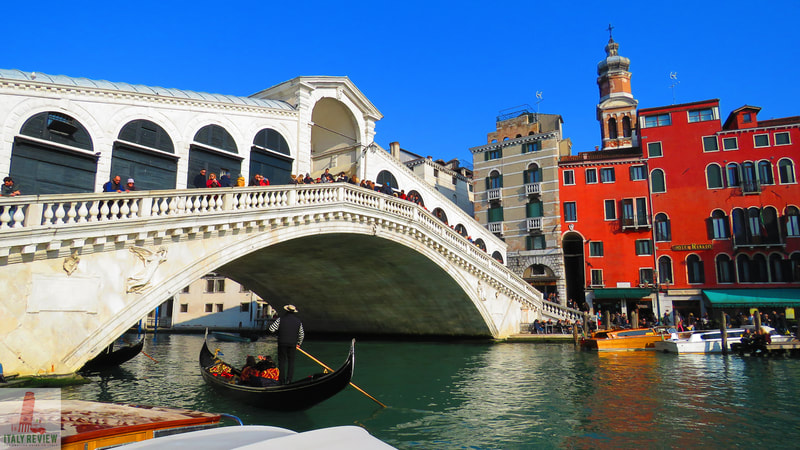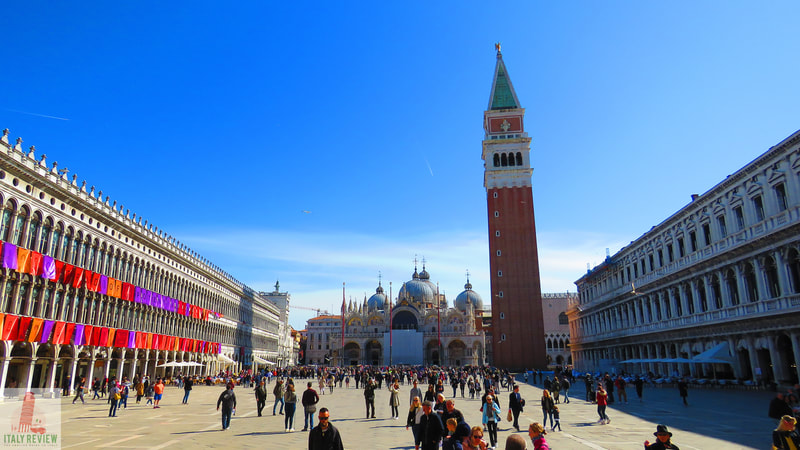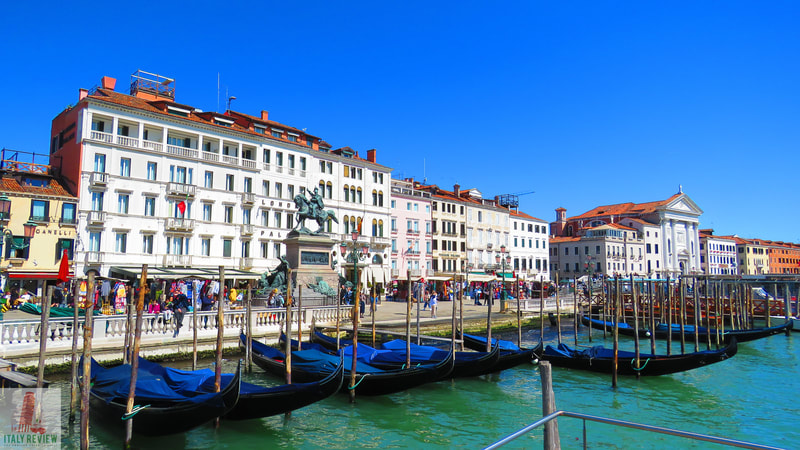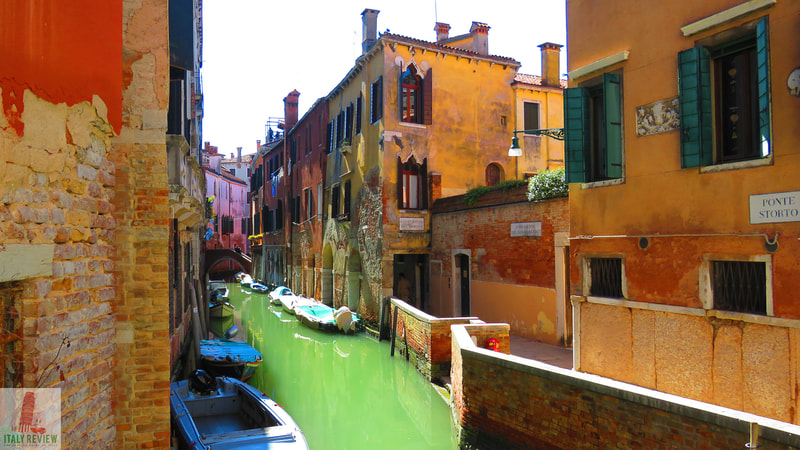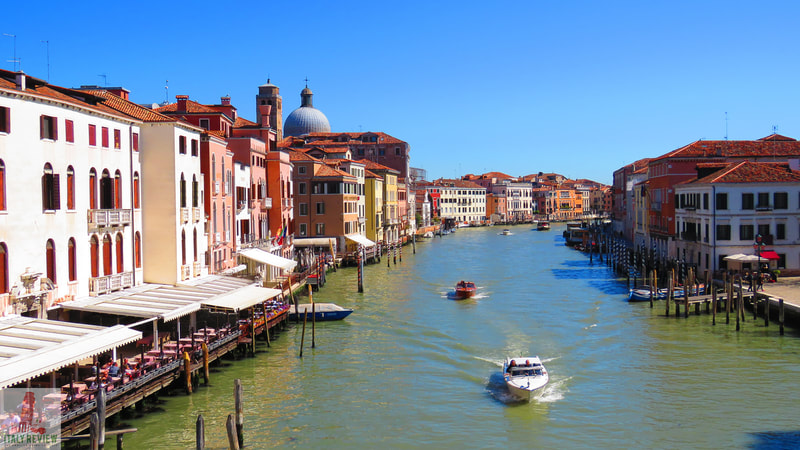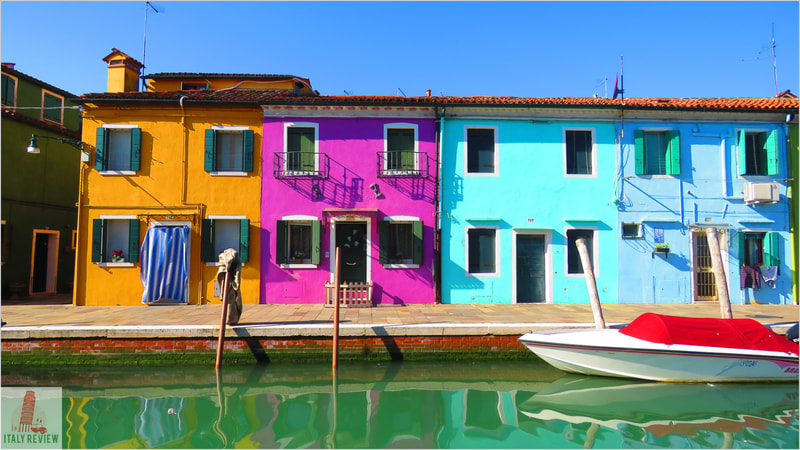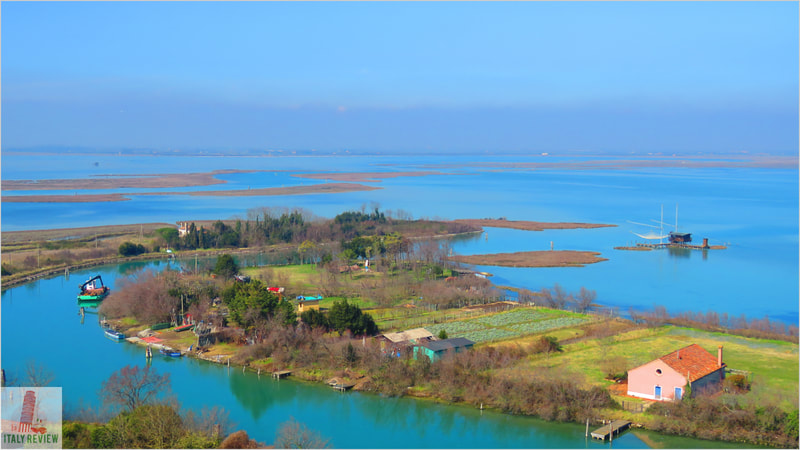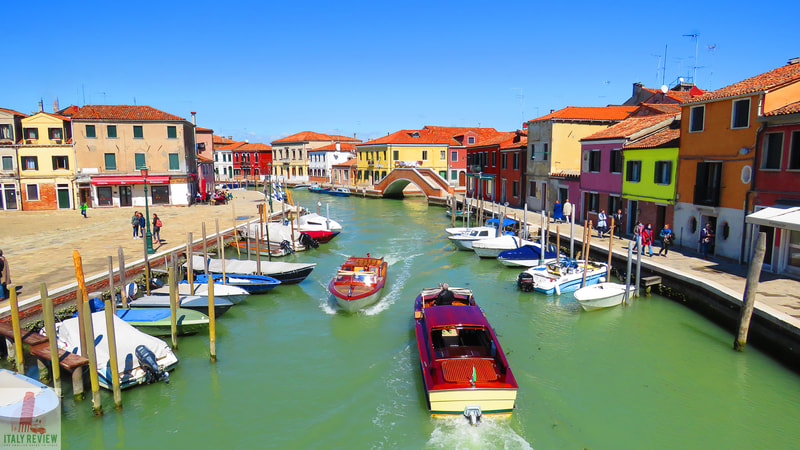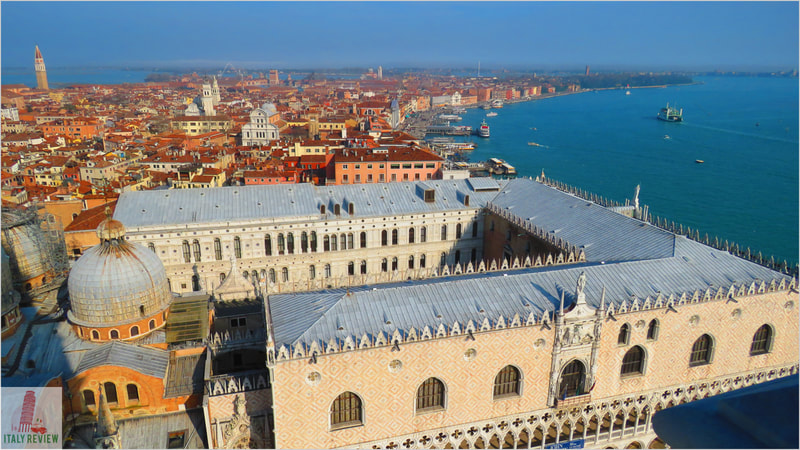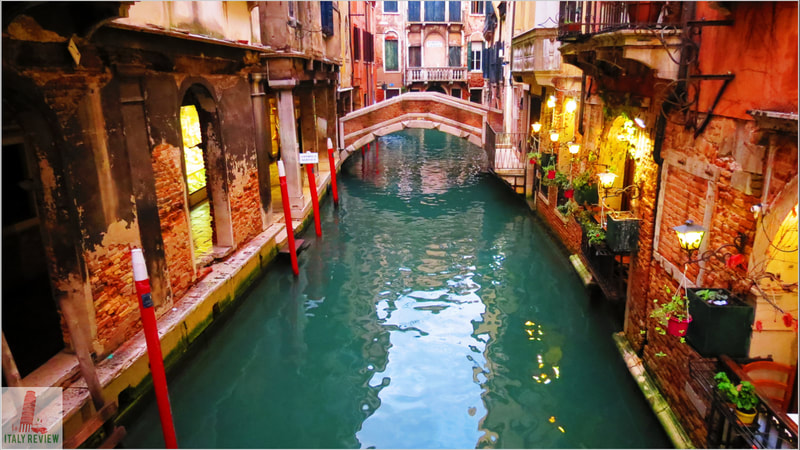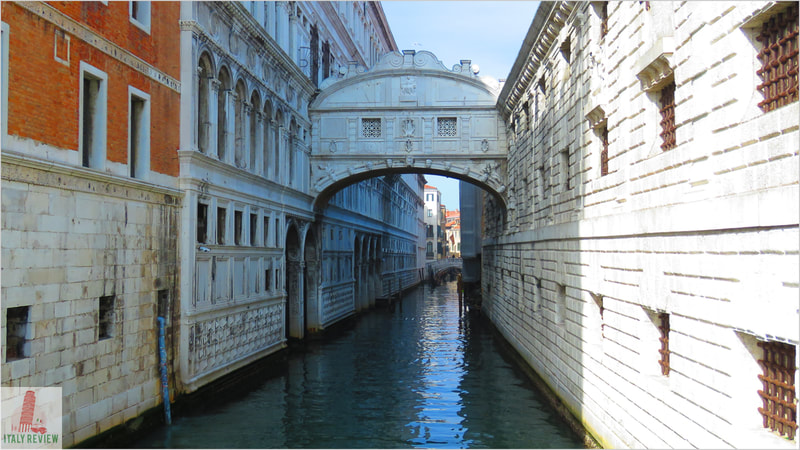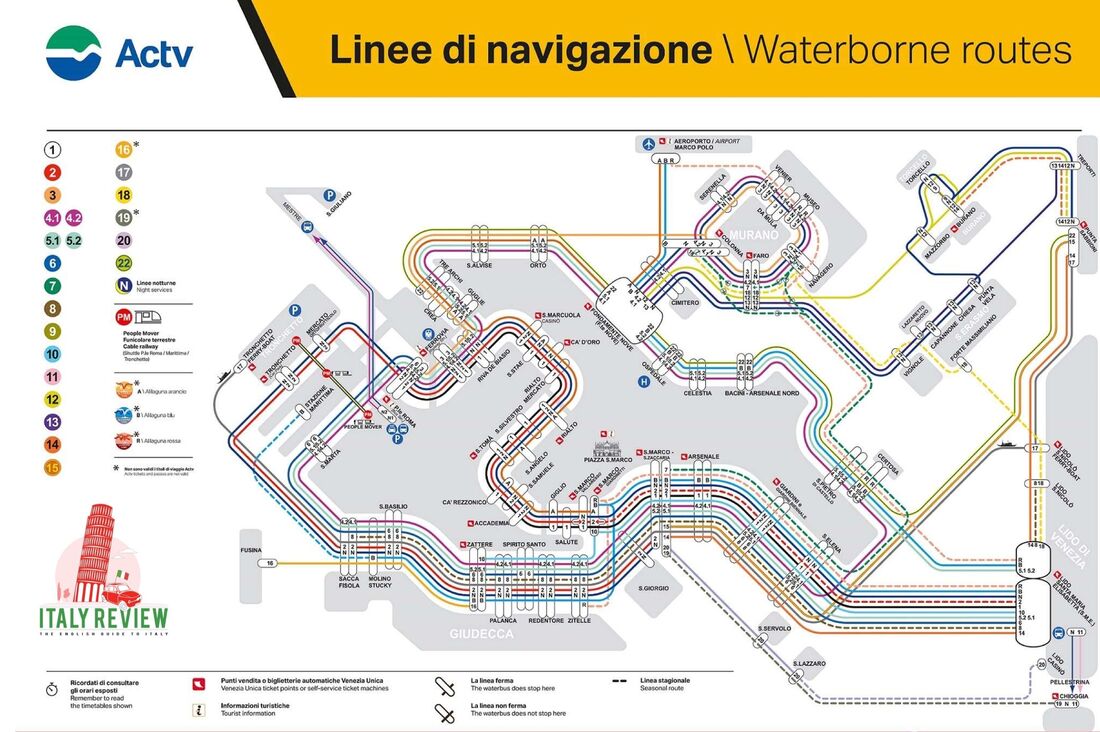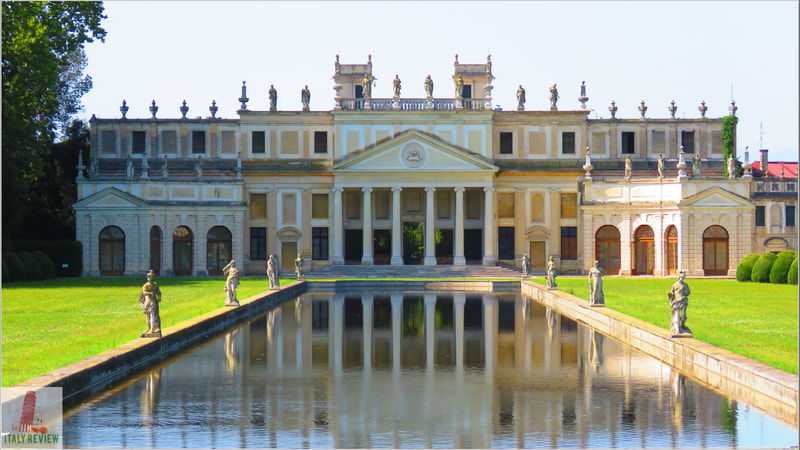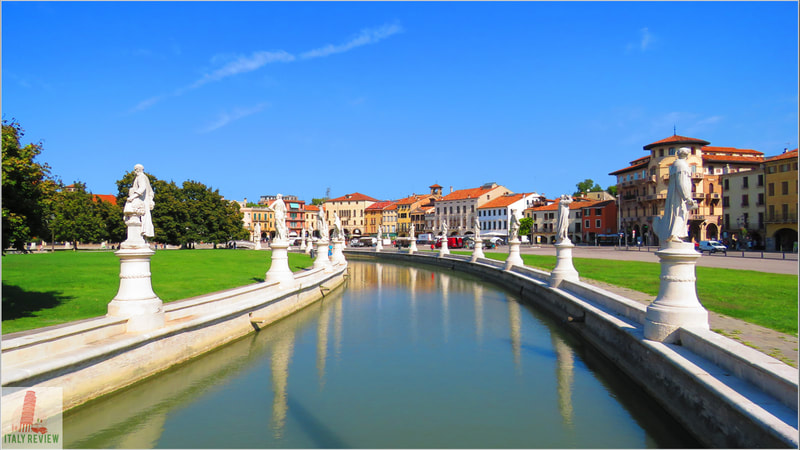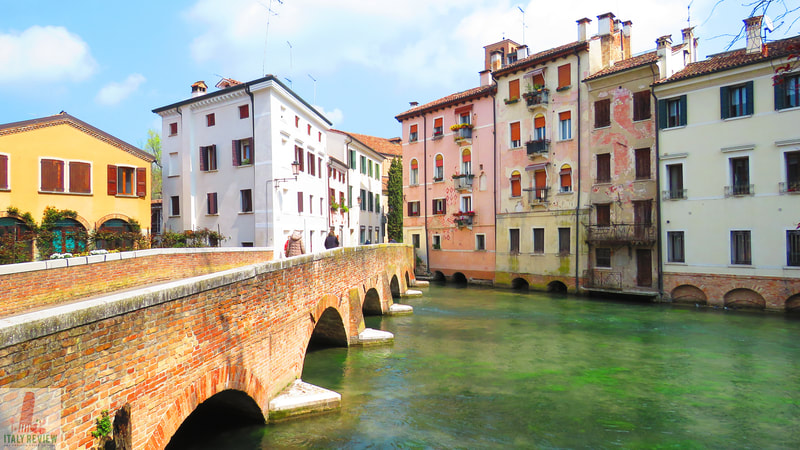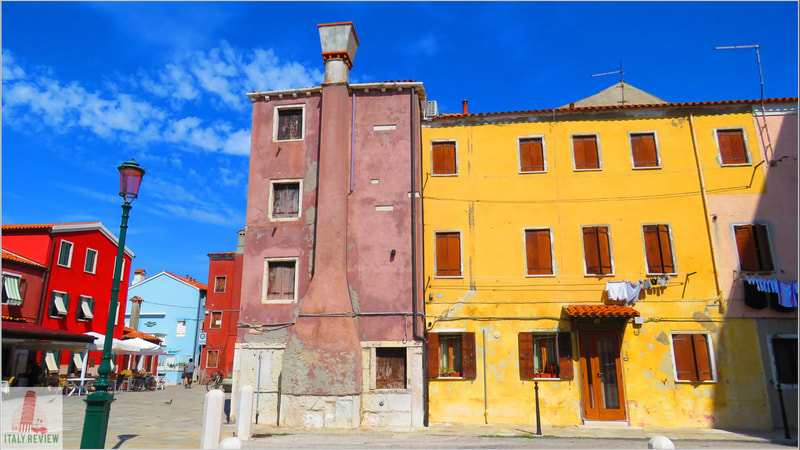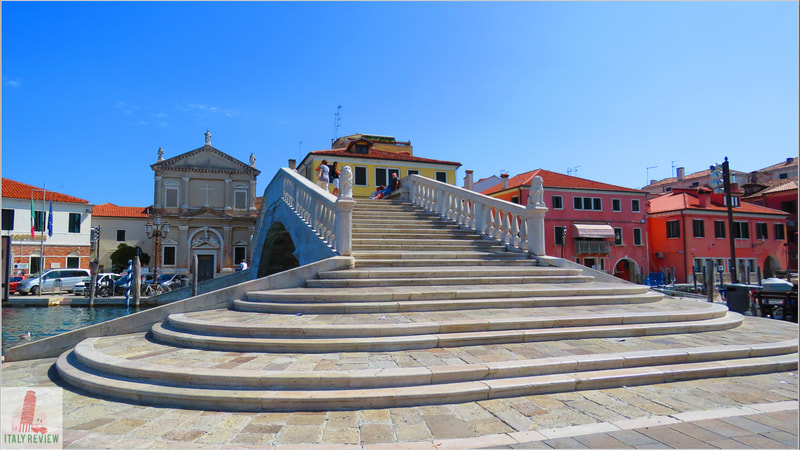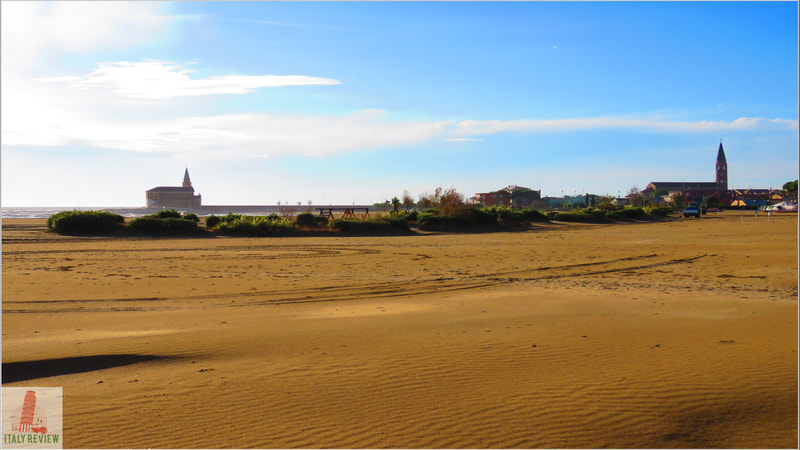Venice
|
Latest update: 15 February 2024
|
By Dion Protani
|
|
Although the concept of a city built on the sea might sound somewhat far-fetched when we think about it, that's exactly what we have with Venice.
Capital of the north-eastern Veneto region, Venice is in fact a series of man-made islands built on the eponymous lagoon, feeding out into the Adriatic Sea. As recently as 421 AD there was nothing here but mud-flats but gradually something quite extraordinary started to take shape. |
Related links
Venice: the incredible city on the sea
Venice, a city like no other, evokes a sense of timeless beauty and romance with its labyrinthine canals, historic palaces, and exquisite artistry. The centerpiece of Venice is the Grand Canal, a bustling waterway flanked by elegant palazzos, where visitors can take a scenic gondola ride or hop on a vaporetto to explore the city's various neighborhoods. St. Mark's Square, or Piazza San Marco, is another must-visit destination, home to the stunning St. Mark's Basilica with its glittering mosaics and the imposing Campanile offering panoramic views of the city.
Nearby, the Doge's Palace stands as a symbol of Venetian power and prestige, featuring opulent chambers adorned with masterpieces by Tintoretto and Veronese. The iconic Rialto Bridge spans the Grand Canal, bustling with activity as locals and tourists alike peruse the vibrant Rialto Market.
Venturing off the beaten path, visitors can discover hidden gems such as the charming districts of Dorsoduro and Cannaregio, with their picturesque streets and quaint squares. Art lovers will delight in the Peggy Guggenheim Collection, showcasing an impressive array of modern artworks in a stunning waterside setting.
Beyond the city limits, the Venetian Lagoon offers opportunities for island hopping, with highlights including the colorful Burano, famous for its lace-making tradition, and the serene island of Torcello, home to ancient churches and peaceful gardens. With its rich history, captivating architecture, and enchanting atmosphere, Venice promises an unforgettable journey into the heart of Italian culture and romance.
Nearby, the Doge's Palace stands as a symbol of Venetian power and prestige, featuring opulent chambers adorned with masterpieces by Tintoretto and Veronese. The iconic Rialto Bridge spans the Grand Canal, bustling with activity as locals and tourists alike peruse the vibrant Rialto Market.
Venturing off the beaten path, visitors can discover hidden gems such as the charming districts of Dorsoduro and Cannaregio, with their picturesque streets and quaint squares. Art lovers will delight in the Peggy Guggenheim Collection, showcasing an impressive array of modern artworks in a stunning waterside setting.
Beyond the city limits, the Venetian Lagoon offers opportunities for island hopping, with highlights including the colorful Burano, famous for its lace-making tradition, and the serene island of Torcello, home to ancient churches and peaceful gardens. With its rich history, captivating architecture, and enchanting atmosphere, Venice promises an unforgettable journey into the heart of Italian culture and romance.
Comune di Venezia
Venice is the capital city of the Veneto region in north-east Italy. The Venetian Lagoon is a series of islands protected by a series of long, thin strips of land which separate it from the Adriatic Sea. In 2021 there were a total 256,083 residents living in the city of Venice while the population of the wider Metropolitan City of Venice province was 843,545.
The most famous sights in Venice are the Basilica di San Marco, the Piazza San Marco where it's located and the Rialto Bridge. The top rated accommodation for Venice is the Rosa Salva Hotel while local cuisine includes cicchetti which are a kind of tapas, risotto dishes, seafood, risi e bisi which is rice and peas, and the baicoli biscuits.
The most famous sights in Venice are the Basilica di San Marco, the Piazza San Marco where it's located and the Rialto Bridge. The top rated accommodation for Venice is the Rosa Salva Hotel while local cuisine includes cicchetti which are a kind of tapas, risotto dishes, seafood, risi e bisi which is rice and peas, and the baicoli biscuits.
|
Province: Metropolitan City of Venice
Region: capital of Veneto Population: 250,913 (source: ISTAT 1 January 2024) Size: 415 km² Top sights: Piazza San Marco, Ponte Rialto, Basilica di San Marco Where to stay: Rosa Salva Hotel What to eat: cicchetti, risotto, seafood, baicoli, risi e bisi |
UNESCO World Heritage Site
Venice and its Lagoon
Year: 1987
Venice and its Lagoon
Year: 1987
What are the most popular tours and activities in Venice?
- Gondola Ride: Experience Venice's enchanting canals on a traditional gondola, with a skilled gondolier guiding you through the historic waterways.
- St. Mark's Basilica Tour: Explore the breathtaking Byzantine architecture and intricate mosaics of this iconic cathedral with a knowledgeable guide.
- Doge's Palace Guided Tour: Discover the history and opulence of the Doge's Palace, including its grand halls, prison cells, and renowned works of art.
- Venetian Cicchetti Food Tour: Delight your taste buds with a culinary adventure through Venice, sampling delicious cicchetti (small dishes) and local wines at traditional bacari (wine bars).
- Murano and Burano Islands Excursion: Visit these picturesque islands known for their glassmaking and colorful houses, respectively, and witness artisans at work.
- Venice Walking Tour: Wander through the narrow streets and hidden squares of Venice, uncovering hidden gems and learning about the city's rich history.
- Venice Ghost and Legends Walking Tour: Embark on an eerie journey through Venice's dark alleys and haunted sites, listening to spine-chilling tales of ghosts and legends.
- Venice Sunset Cruise: Admire the city's beauty bathed in the golden glow of the setting sun on a relaxing boat tour of the Venetian Lagoon.
- Venice Photography Tour: Capture the city's iconic landmarks and scenic views with the guidance of a professional photographer, learning valuable photography tips along the way.
- Venice Canal Cruise: Glide along Venice's canals aboard a vaporetto (water bus), enjoying panoramic views of the city's stunning architecture and landmarks from the water.
Venice In-Depth
The Rise and Fall of Venice
The story of Venice's rise and fall is one that can go toe to toe with that of Rome; in both cases, a tiny plot of land grew exponentially, dominating the world, before a gradual decline and fall from grace. Whereas the Roman Empire's growth came largely through military might, the Venetian golden age was based on trade, ingenuity and no small amount of guile.
At the height of its power, Venice was the trade capital of the world, dominating the waves from its tiny lagoon to the new worlds in the east. The riches that poured into Venice during its medieval heyday have left a remarkable imprint on the city-scape that is unlike any other in the world.
At the height of its power, Venice was the trade capital of the world, dominating the waves from its tiny lagoon to the new worlds in the east. The riches that poured into Venice during its medieval heyday have left a remarkable imprint on the city-scape that is unlike any other in the world.
The Venetian Lagoon and the six Sestieri districts
Venice is the central island in the Venice Lagoon, one of several hundred islets, and itself made up of dozens of oddly-shaped jigsaw puzzle pieces that are separated by a series of canals and held together by a network of bridges.
There are six districts on the main island of Venice, known as sestieri, which roughly translates as "sixths". The most famous of the six sestieri is San Marco as this is the home to the major sights in the city including Saint Mark's Basilica (Basilica di San Marco), Saint Mark's Square (Piazza San Marco), the Doge's Palace (also known as the Palazzo Ducale) and Saint Mark's Bell Tower.
There are six districts on the main island of Venice, known as sestieri, which roughly translates as "sixths". The most famous of the six sestieri is San Marco as this is the home to the major sights in the city including Saint Mark's Basilica (Basilica di San Marco), Saint Mark's Square (Piazza San Marco), the Doge's Palace (also known as the Palazzo Ducale) and Saint Mark's Bell Tower.
Where to start?
The starting point for most itineraries of Venice is its most illustrious square: Piazza San Marco. The beautiful square is edged by elegant porticoed walkways concealing a series of cafes and restaurants, one of the best places for people-watching in the world.
There's very rarely a shortage of people to watch either, and those people mingle in semi-harmony with the thousands of pigeons who call the square home, eagerly eyeing titbits from passing tourists. At one end of the square lies the city's most important religious building: the Basilica di San Marco.
This is one of the most beautiful cathedrals in the world, not only for its intricate facade but also for the treasures it holds within. For one of the best views of the piazza you can make your way to the roof of the Basilica and take it all in.
This isn't quite the best view in Venice however; that accolade belongs to the 98 metre high Saint Mark's Bell Tower. If you're just starting your first walk around Venice and you want to get your bearings, this is the ideal way to start. Take the lift to the top of the tower and you can enjoy the incredible views of the city, but also start to understand how the lagoon is mapped out and the role it has within daily life.
There's very rarely a shortage of people to watch either, and those people mingle in semi-harmony with the thousands of pigeons who call the square home, eagerly eyeing titbits from passing tourists. At one end of the square lies the city's most important religious building: the Basilica di San Marco.
This is one of the most beautiful cathedrals in the world, not only for its intricate facade but also for the treasures it holds within. For one of the best views of the piazza you can make your way to the roof of the Basilica and take it all in.
This isn't quite the best view in Venice however; that accolade belongs to the 98 metre high Saint Mark's Bell Tower. If you're just starting your first walk around Venice and you want to get your bearings, this is the ideal way to start. Take the lift to the top of the tower and you can enjoy the incredible views of the city, but also start to understand how the lagoon is mapped out and the role it has within daily life.
The main islands in the Lagoon
- Murano
- Burano
- Torcello
- Venice Lido
From the dramatic vantage point at the top of the tower you can see the Grand Canal snaking its way around the centre of Venice, along with the smaller islands that lay in the distance. There are 118 islands in the lagoon and whilst you probably won't wish to visit them all, there are some that certainly merit some attention.
The best way to travel around Venice is via water buses which are called vaporetti. Before embarking on a vaporetto ride, it's a good idea to first familiarise yourself with the Venice Water Bus Vaporetto Map with its complex network of routes, numbers and colours. Once you've got to grips with that you can start to make your way around the lagoon effectively. One of the first stops should be the island of Murano; many of the lagoon's islands are synonymous with a certain trade and in the case of Murano that trade is glass. You can visit Murano's Glass Museum or even see the glass being made at the little factories around the island.
Another island that's famous for a certain trade is Burano (just one letter out from Murano), which is famed for its production of lace. It may well be the case however, that you come away from Burano not thinking about lace, but about the extraordinary collection of multi-coloured buildings that create a mesmerising effect. Burano can even boast its own leaning tower and is certainly not to be missed.
Torcello is a marked contrast to both Murano and Burano: it's much smaller and doesn't have the network of canals or rows of colourful buildings that those two islands have. Its main attraction is the beautiful 7th century Torcello Cathedral with its Byzantine mosaics.
The best way to travel around Venice is via water buses which are called vaporetti. Before embarking on a vaporetto ride, it's a good idea to first familiarise yourself with the Venice Water Bus Vaporetto Map with its complex network of routes, numbers and colours. Once you've got to grips with that you can start to make your way around the lagoon effectively. One of the first stops should be the island of Murano; many of the lagoon's islands are synonymous with a certain trade and in the case of Murano that trade is glass. You can visit Murano's Glass Museum or even see the glass being made at the little factories around the island.
Another island that's famous for a certain trade is Burano (just one letter out from Murano), which is famed for its production of lace. It may well be the case however, that you come away from Burano not thinking about lace, but about the extraordinary collection of multi-coloured buildings that create a mesmerising effect. Burano can even boast its own leaning tower and is certainly not to be missed.
Torcello is a marked contrast to both Murano and Burano: it's much smaller and doesn't have the network of canals or rows of colourful buildings that those two islands have. Its main attraction is the beautiful 7th century Torcello Cathedral with its Byzantine mosaics.
Venice's unmissable sights
- Basilica di San Marco
- Saint Mark's Bell Tower
- Saint Mark's Square
- Rialto Bridge
- Doge's Palace
- Teatro La Fenice
- Bridge of Sighs
- Gallerie dell'Accademia
- Scuola Grande di San Rocco
- Peggy Guggenheim Collection
Back on the main island of Venice, the Rialto Bridge is one of the most beautiful bridges in the world. It's one of the very symbols of Venice and stands astride the Grand Canal. If you're looking for the very essence of Venice, you can find it here as the busy waterway throngs with vaporetti vying for position with the tiny gondolas, manned by gondoliers in their typical hats and striped shirts.
Simply walking the streets of Venice is one of the most enjoyable ways of getting to know the city, but for a treat you can also take a romantic gondola ride around the canals whilst being serenaded by a gondolier. Away from the serenading gondoliers, you'll find a rather more polished performance on offer at the city's most famous theatre: Teatro La Fenice.
Depending on the time of year, you may wish to spend some of your time exploring Venice's museums and art galleries. They're busier during the summer and at a time when you might be more interested in enjoying the warm weather, but during those cold, atmospheric days of winter, you can enjoy the delights of the Gallerie dell'Accademia, the Scuola Grande di San Rocco or the Peggy Guggenheim Collection to give just three examples.
Absolutely not to be missed, no matter the time of year, is the Doge's Palace; it was from here that the city's ruler (The Doge) made the important decisions that affected world trade, but also the location of another famous bridge. Il Ponte dei Sospiri translates to the familiar name of the Bridge of Sighs; so-called as the prisoners crossing its internal walkway would catch their last glimpse of the outside world here before reaching the palace dungeons.
Simply walking the streets of Venice is one of the most enjoyable ways of getting to know the city, but for a treat you can also take a romantic gondola ride around the canals whilst being serenaded by a gondolier. Away from the serenading gondoliers, you'll find a rather more polished performance on offer at the city's most famous theatre: Teatro La Fenice.
Depending on the time of year, you may wish to spend some of your time exploring Venice's museums and art galleries. They're busier during the summer and at a time when you might be more interested in enjoying the warm weather, but during those cold, atmospheric days of winter, you can enjoy the delights of the Gallerie dell'Accademia, the Scuola Grande di San Rocco or the Peggy Guggenheim Collection to give just three examples.
Absolutely not to be missed, no matter the time of year, is the Doge's Palace; it was from here that the city's ruler (The Doge) made the important decisions that affected world trade, but also the location of another famous bridge. Il Ponte dei Sospiri translates to the familiar name of the Bridge of Sighs; so-called as the prisoners crossing its internal walkway would catch their last glimpse of the outside world here before reaching the palace dungeons.
Venice Travel
As one of the world's number one tourist destinations, travel to, from and around Venice is a sophisticated business. Most international travellers come via Venice Marco Polo Airport; located on the mainland around 12 kilometres away from the city centre. Venice is connected to the mainland by a long road and rail bridge across the lagoon. By rail you can access the heart of the city at the Santa Lucia Train Station from which you can connect to the other major cities in Italy.
The road portion of the bridge allows cars to reach the edge of the city centre at a small island called Tronchetto, where there's a large car parking facility. One of the most important travel hubs is Piazzale Roma: a large square that you can reach by bus, and from where passengers arriving by bus or by private car, can make their way to the centre of Venice, either on foot or by taking one of the vaporetti.
The road portion of the bridge allows cars to reach the edge of the city centre at a small island called Tronchetto, where there's a large car parking facility. One of the most important travel hubs is Piazzale Roma: a large square that you can reach by bus, and from where passengers arriving by bus or by private car, can make their way to the centre of Venice, either on foot or by taking one of the vaporetti.
Close to Venice
If you can tear yourself away from the considerable charms of Venice, there are further delights to be found once you venture into the surrounding area. Venice is the capital of the Veneto region which is rich in history, architecture and also beach resorts.
The Veneto area was the birthplace of Andrea Palladio, one of the most influential architects in history; most closely associated with his legacy of work in the city of Vicenza, a large number of his buildings can be found throughout the region. One of those is just on the doorstep of Venice: the beautiful Baroque palace of Villa Pisani with its elegant apartments and landscaped gardens which include a complicated maze.
Just a bit further out from Venice is one of Veneto's major cities: Padua. Called Padova in Italian, the city is one of the most beautiful in Italy with some extraordinary sights. Among those is the Prato della Valle piazza, a huge elliptical open-space surrounded by a moat lined with statues. Padua is a UNESCO World Heritage Site twice over with its Botanical Garden and the Fresco Cycles of the Scrovegni Chapel by early Renaissance artist Giotto. The city centre of Padua is replete with further beautiful piazzas, landmarks churches including the Basilica di Sant'Antonio and the exquisite Padua Baptistery.
Veneto is one of the most affluent regions in Italy and much of its wealth comes from its enviable collection of cities. Just a short distance to the north of Venice we find another of those in Treviso. The area around Treviso is synonymous with the production of Prosecco while the city itself is display of medieval architecture coupled with waterside treats such as the famous Isola della Pescheria fish market.
The three locations above can be reached either by road or rail while the next two on the list provide the opportunity to travel across the Lagoon. The most famous islands in the Lagoon are Burano, Murano and Torcello but venturing a little further takes you completely away from the sometimes maddening crowds of Venice itself. Pellestrina is a quirky strip of land that survives on fishing but has a charm all off is own with multi-coloured buildings and a somewhat ramshackle beach area.
A greater sense of refinement can be found just beyond Pellestrina at the town of Chioggia. Very much a "mini-Venice", it has its own system of canals, elegant architecture and a special place in history. The Battle of Chioggia was a defining battle between the two maritime powerhouses of Venice and Genoa in 1380, the result of which helped the Venetian Republic to its eventual supremacy in medieval trade.
There is so much history and beautiful architecture in and around Venice that it's sometimes easy to overlook the fact that it's a thriving beach resort destination. You need only hop across on a vaporetto to Lido to spend the day on the beach and there are numerous other resorts around the Lagoon including Lido di Jesolo. However, if you have a car, one of the most charming seaside towns in Italy is reachable in around an hour or so. Caorle is a colourful resort with a lovely beach and a famous Bell Tower among its attractions.
The Veneto area was the birthplace of Andrea Palladio, one of the most influential architects in history; most closely associated with his legacy of work in the city of Vicenza, a large number of his buildings can be found throughout the region. One of those is just on the doorstep of Venice: the beautiful Baroque palace of Villa Pisani with its elegant apartments and landscaped gardens which include a complicated maze.
Just a bit further out from Venice is one of Veneto's major cities: Padua. Called Padova in Italian, the city is one of the most beautiful in Italy with some extraordinary sights. Among those is the Prato della Valle piazza, a huge elliptical open-space surrounded by a moat lined with statues. Padua is a UNESCO World Heritage Site twice over with its Botanical Garden and the Fresco Cycles of the Scrovegni Chapel by early Renaissance artist Giotto. The city centre of Padua is replete with further beautiful piazzas, landmarks churches including the Basilica di Sant'Antonio and the exquisite Padua Baptistery.
Veneto is one of the most affluent regions in Italy and much of its wealth comes from its enviable collection of cities. Just a short distance to the north of Venice we find another of those in Treviso. The area around Treviso is synonymous with the production of Prosecco while the city itself is display of medieval architecture coupled with waterside treats such as the famous Isola della Pescheria fish market.
The three locations above can be reached either by road or rail while the next two on the list provide the opportunity to travel across the Lagoon. The most famous islands in the Lagoon are Burano, Murano and Torcello but venturing a little further takes you completely away from the sometimes maddening crowds of Venice itself. Pellestrina is a quirky strip of land that survives on fishing but has a charm all off is own with multi-coloured buildings and a somewhat ramshackle beach area.
A greater sense of refinement can be found just beyond Pellestrina at the town of Chioggia. Very much a "mini-Venice", it has its own system of canals, elegant architecture and a special place in history. The Battle of Chioggia was a defining battle between the two maritime powerhouses of Venice and Genoa in 1380, the result of which helped the Venetian Republic to its eventual supremacy in medieval trade.
There is so much history and beautiful architecture in and around Venice that it's sometimes easy to overlook the fact that it's a thriving beach resort destination. You need only hop across on a vaporetto to Lido to spend the day on the beach and there are numerous other resorts around the Lagoon including Lido di Jesolo. However, if you have a car, one of the most charming seaside towns in Italy is reachable in around an hour or so. Caorle is a colourful resort with a lovely beach and a famous Bell Tower among its attractions.

